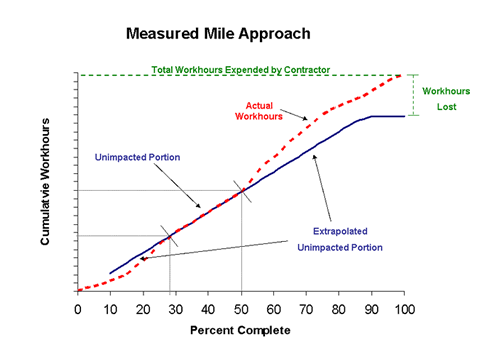Change Order Impacts

From “Recouping Losses” by Dr. Awad Hanna – Electrical Contractor, Sept. 2003
Change orders are a necessary part of every construction contract. However, sometimes the size or sheer number of changes is such that the costs attributable to the individual change orders are exceeded due to the cumulative disruptive effect of the changes. This cumulative impact, or “ripple effect,” caused by the size or number of changes is compensable to the contractor. The consultants at Hanna Consulting Group literally “wrote the book” on cumulative impact through their research leadership in recent studies performed by the Construction Industry Institute (CII), the Mechanical Contractors Association of America (MCAA), the National Electrical Contractors Association (NECA), and the Sheet Metal and Air Conditioning Contractors’ National Association (SMACNA). Most recently, the consultants of Hanna Consulting Group completed new manuals for NECA and MCAA on calculating productivity factor losses. This expertise makes no other consulting firm better suited to help you in your claim situations.
Hanna Consulting Group brings a full range of services to your change order impact claims including expertise in proving the liability of the owner, calculation of the financial losses incurred, and demonstrating exactly how owner-caused changes impacted your project.
Below are some of the methods used to calculate the impact of change orders:
Hanna Method
The Hanna Method (or Cumulative Impact Approach) was developed by HCG’s own Dr. Hanna as part of national research project for the construction industry institute (CII, NECA and MCAA) by utilizing an extensive database of over 100 projects that were significantly impacted by change orders to develop two statically based models. One model calculates the probability that a project was impacted by change orders. If the project was indeed impacted by change, the second model will determine by how much. This method considers both contractor and owner influences, is unbiased, and is completely quantitative.
Measured Mile Approach
In the Measured Mile Approach, productivity rates during impacted periods are compared with those during non-impacted periods to arrive at the amount of impact. In the figure below, the red-dashed line represents the actual workhours that were expended on the project. The solid-blue line represents the expected workhours needed as extrapolated from an unimpacted portion of project performance. Using these two pieces of information and adjusting for estimating errors, the inefficient or impacted hours can be determined to calculate appropriate compensation. It is worth noting that the Measured Mile Approach is the best method for calculating change order impact; however, the variable nature of construction tasks and confluence of external factors often make the identification of an appropriate unhindered segment difficult or impossible.
Factors Approach
The Factors Approach to calculating the impact of change orders relies on the productivity losses experienced from various project conditions brought about by the issuance of change orders. For example, under a change condition, a contractor may need to use overtime, overman the jobsite, work additional shifts, or work in close proximity to other trades (stacking of trades). Multiple methods for calculating the individual losses for each productivity factor have been developed by entities such as the U.S. Army, CII, NECA, and MCAA.
Total Cost Method
The simplest approach to calculating the impact of change orders is the Total Cost Method. Under the Total Cost Method, the owner pays the difference between the bid price and the final actual project cost. This method is used with great reluctance and its use is even barred in some states.
Modified Total Cost Method
The Modified Total Cost Method is the same as the Total Cost Method but with adjustments made for contractor-caused impacts. For example, reductions in a Total Cost Method Claim would be made under the Modified Total Cost Method for items such as contractor bidding errors and contractor caused productivity impacts.

